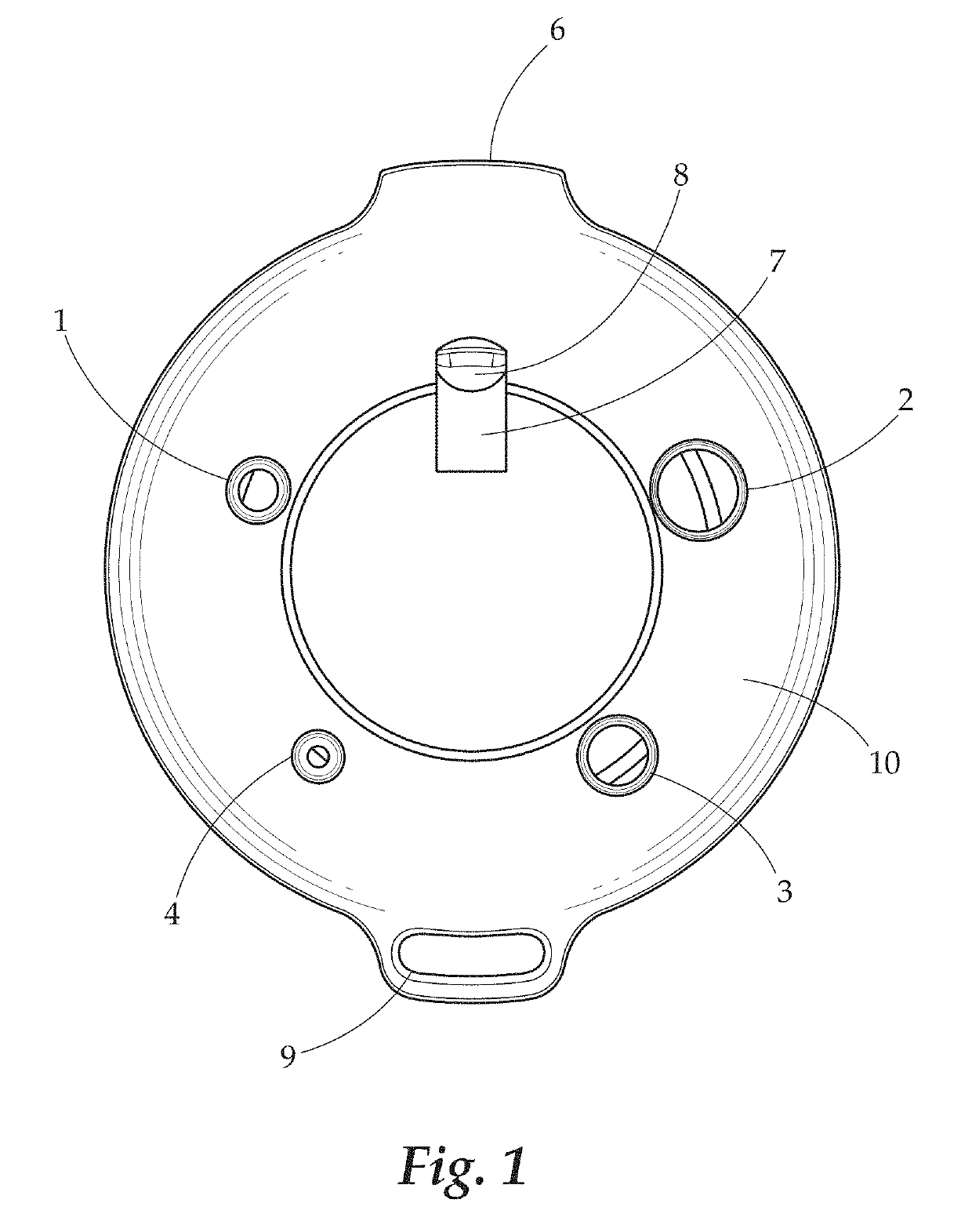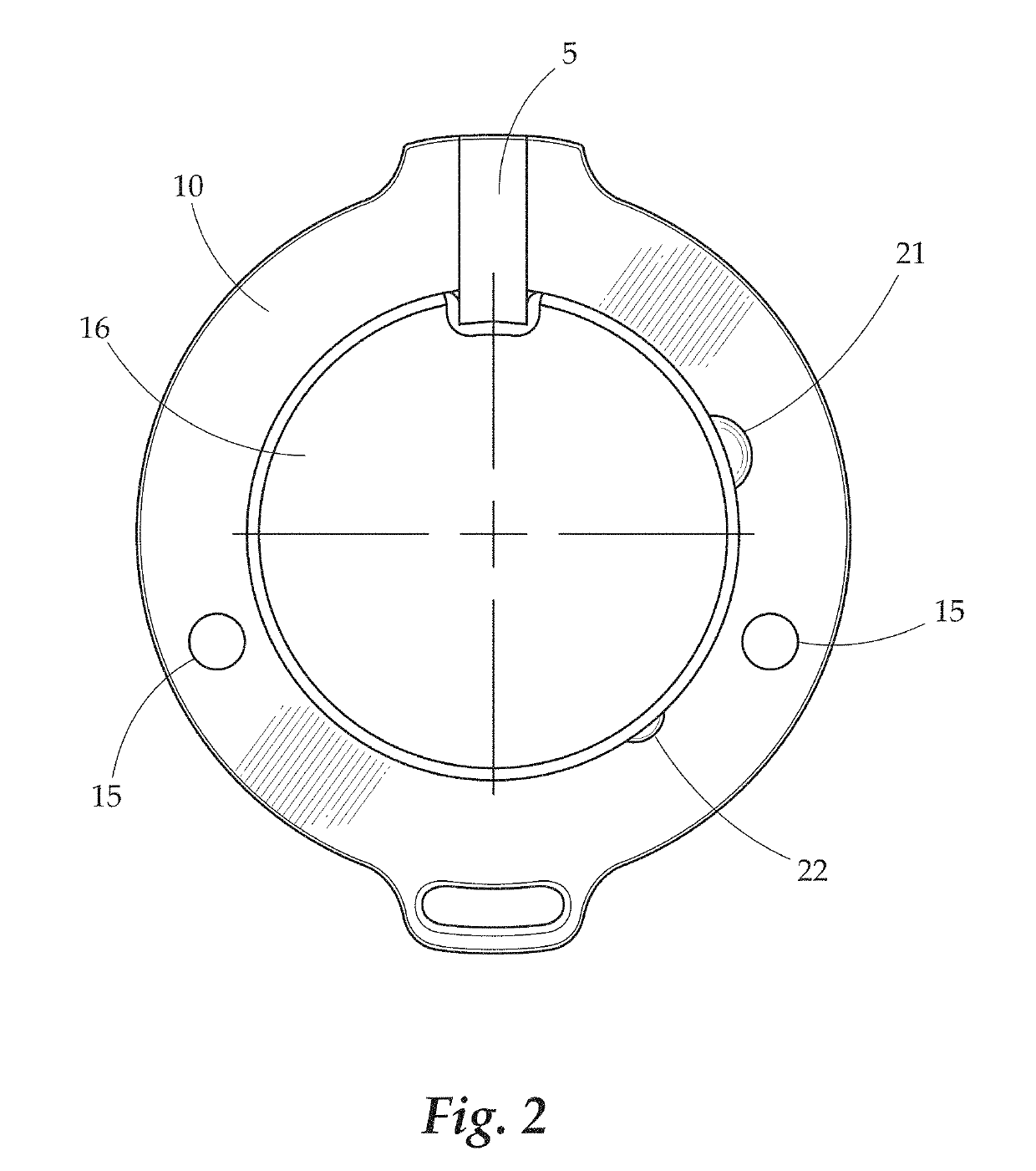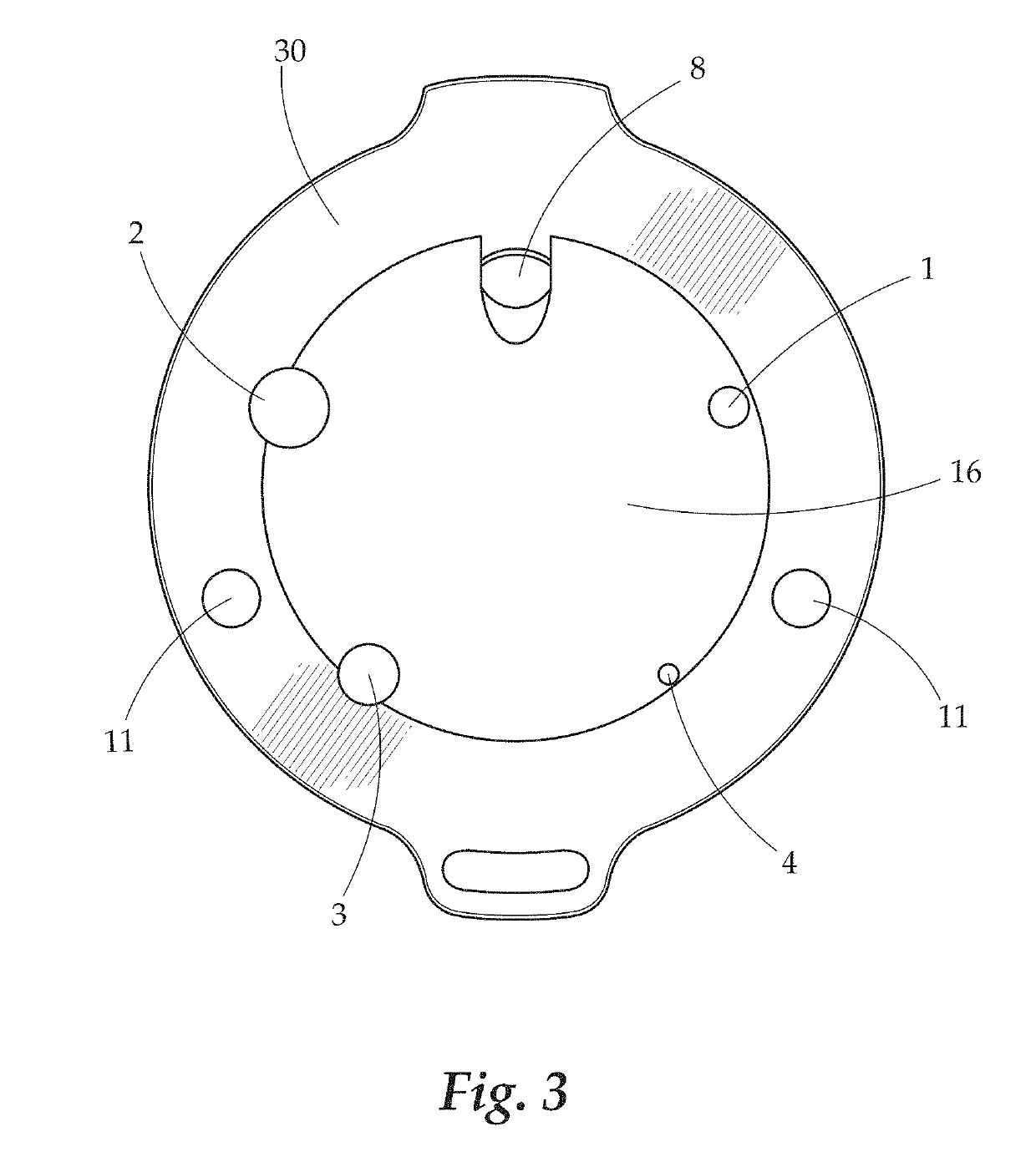Instrument and related notation and methods
a woodwind instrument and notation technology, applied in instruments, ocarinas, music, etc., can solve the problems of lack of features, inability to maintain consistency, and falseness, and achieve the effects of timbre and resonance, higher tones, and consistent tonal clarity and timbre and resonan
- Summary
- Abstract
- Description
- Claims
- Application Information
AI Technical Summary
Benefits of technology
Problems solved by technology
Method used
Image
Examples
Embodiment Construction
[0033]The detailed description set forth below in connection with the appended drawings is intended as a description of presently preferred embodiments of the invention and does not represent the only forms in which the present invention may be constructed and / or utilized. The description sets forth the functions and the sequence of steps for constructing and operating the invention in connection with the illustrated embodiments.
[0034]The present inventive instrument is a relative of closed-end whistles and other types of vessel flutes. The instrument is a closed-end instrument. It has a partial hollowed body with four tone holes connected to an elevated conical windway enclosed in the mouthpiece. The inner windway of the mouthpiece may be defined by two (upper and lower) body halves, or may be otherwise defined by the body. The entire instrument consists of the body and has a basic range of an octave. It is tuned in a specific temperament system, enabling the instrument to compromi...
PUM
 Login to View More
Login to View More Abstract
Description
Claims
Application Information
 Login to View More
Login to View More - R&D
- Intellectual Property
- Life Sciences
- Materials
- Tech Scout
- Unparalleled Data Quality
- Higher Quality Content
- 60% Fewer Hallucinations
Browse by: Latest US Patents, China's latest patents, Technical Efficacy Thesaurus, Application Domain, Technology Topic, Popular Technical Reports.
© 2025 PatSnap. All rights reserved.Legal|Privacy policy|Modern Slavery Act Transparency Statement|Sitemap|About US| Contact US: help@patsnap.com



